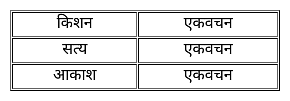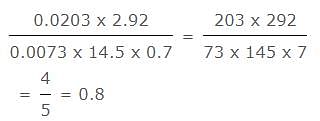BPSC TGT SST (History & Economics) Mock Test - 2 - Bihar PGT/TGT/PRT MCQ
30 Questions MCQ Test - BPSC TGT SST (History & Economics) Mock Test - 2
दिए गए विकल्पों में से 'प्रखर' का विलोम शब्द है?
| 1 Crore+ students have signed up on EduRev. Have you? Download the App |
"बच्चे बस से पाठशाला जाते हैं।" इस वाक्य में कौन सा कारक हैं?
Directions to Solve
In each of the following questions find out the alternative which will replace the question mark.
Question -
16 : 56 :: 32 : ?
The average number of visitors in a museum on each Sunday is 420 and the average number of visitors in the museum on any other day is 210. What is the average number of per day visitors in the whole month of April, which starts on Saturday?
Due to an increment in the price of the ticket of a theater by 25%, the number of visitors decreased by 22.50%. By what percentage does the collection of the theater decrease?
Direction: In each of the following questions, a related pair of words is followed by four pairs of words or phrases. Select the pair that best expresses a relationship similar to the one expressed in the question pair.
Doggerel : Poet
Why did the Swadeshi movement fizzle out? Pick out possible reasons from the choices given below:
1. There was severe government repression.
2. It rejected the techniques that later came to be associated with successful Gandhian politics such as noncooperation and passive resistance.
3. Peasantry did not take part in large numbers, and the movement was largely restricted to the upper social and economic classes.
Select the correct answer using the codes below.
Consider the following statements regarding the teachings and practices of Jainism:
- Jainism teaches the concept of anekantavada, which suggests that truth and reality have multiple aspects and no single viewpoint is the complete truth.
- Sallekhana, the practice of fasting to death, is considered an act of suicide in Jain philosophy.
- The Digambara sect of Jainism believes that women cannot achieve liberation (moksha) in their current birth.
Which of the statements given above is/are correct?
What was the royal emblem for the Pandyas?
Identify the great poet who was a contemporary of the Chola king Karikaral and the Chera King Senguttuvan.
Bali was the name of voluntary offering during Rig-Vedic period, but when it became the compulsory tax?
The Indus people were probably ruled by
In which Veda do we find reference to locked waters and water wheels?
Make pairs out of the following :
What was the important port of eastern coast in the Sangam age?
Lokamahadevi, the chief queen of Chola king performed the ‘Hiranyagarbha’ ceremony (passing one’s body through a golden cow). Whose wife was she?
In which Mughal emperor ’s reign did the administration deteriorate as a result of his reckless grants of jagirs and promotions?
Infant Mortality Rate refers to the number of children that die:
Globalisation has led to an improvement in living conditions:
For how many days NREGA provides employment?
What is the primary criterion used by the World Bank for classifying different countries?






















